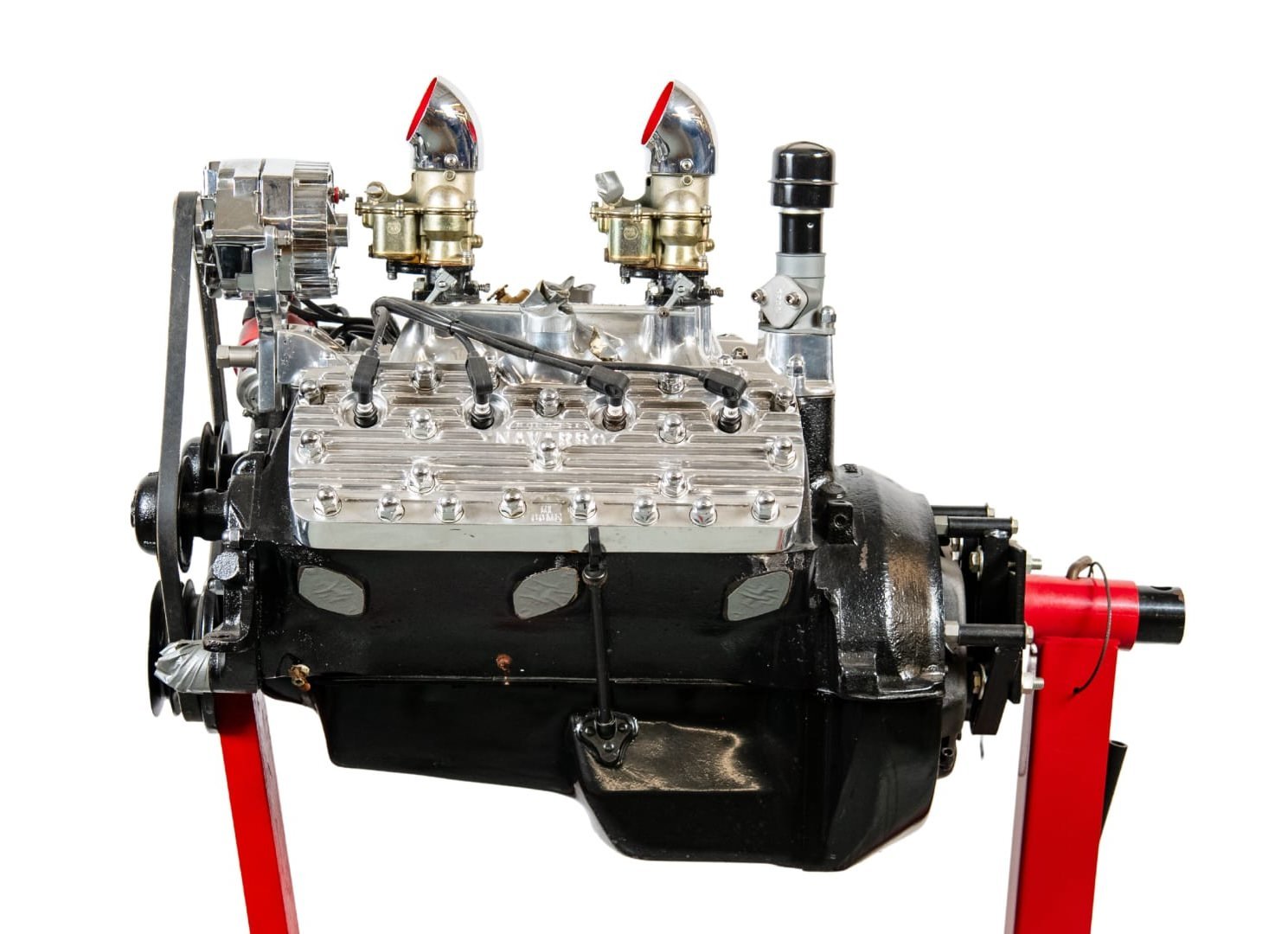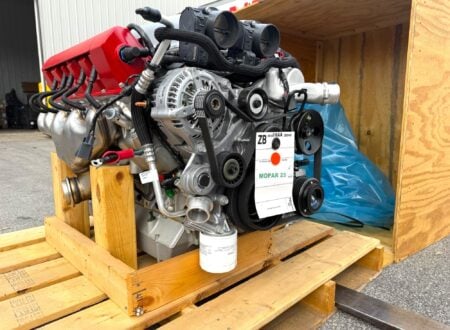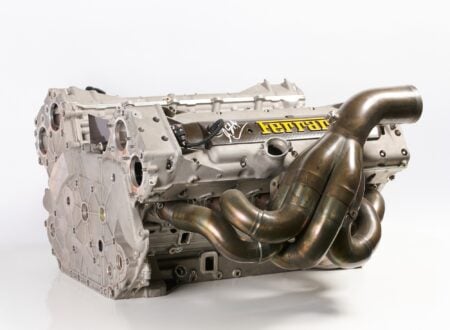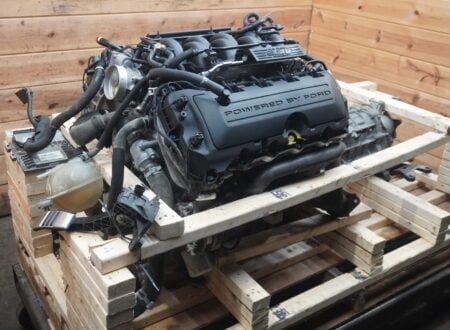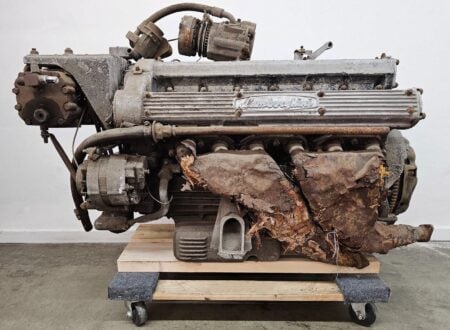This is a rare Ford Navarro Flathead V8, it’s a high-performance version of Ford’s iconic first V8 fitted with a set of aluminum-alloy Navarro heads – considered an essential for many hot rodders from the 1950s right through to the modern day.
The Ford Flathead V8 debuted in 1932, fitted to the Ford Model 18, often referred to simply as the Ford V-8. The Model 18 was an affordable car that offered excellent performance for the era, it was the first time a V8 engine had been fitted to a car that the average Joe could afford, and it would mark the beginning of the century-long American love affair with the V8 layout.
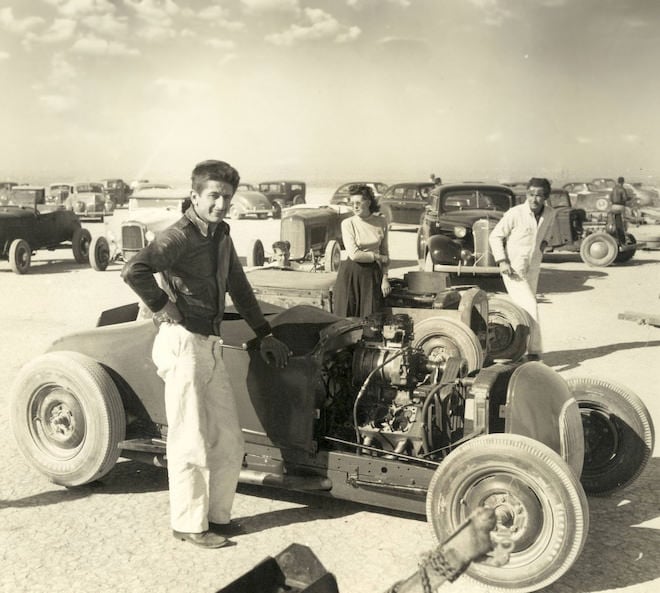

Who Was Barney Navarro?
Barney Navarro got his start in the automotive industry as a teen living in New York. His father bought the family a well-worn Willys Knight sedan, his plan was to use the car to drive the family home to Los Angeles – a distance of 2,789 miles.
Before they could depart, they needed to rebuild the engine. As Barney later recounted: “My dad rented space in a shop, and at the age of 10, I became a gofer, as I assisted in the engine overhaul.”
The rebuild was a success, and the family completed their journey and settled near Glendale in Los Angeles. Barney finished high school there and, having discovered his passion for engines, enrolled himself in evening classes at Glendale High School at the machine shop.
One of his first paid gigs was working with Bernard and Bob Weaver on their midget race car. They had him slice a straight-eight Locomobile engine in half to create a functional inline-four. The engine worked, but wasn’t suited to racing, and so the midget racer became a fixture of the mid-field.
At the age of 16 Barney bought his first car, a tired old 1929 Hudson, which he promptly got to work on in the hopes of making it faster – he added twin carburetors and some other upgrades. He graduated high school in 1937 and promptly got a job as a machinist locally at Heidrich Tool & Die.
In 1940 he joined the Glendale Strokers Car Club, along with some other early hot rod icons, and with his new earnings he bought himself a 1939 Ford Tudor coupe – importantly it was powered by a Ford Flathead V8. He didn’t know it at the time, but this engine would shape the rest of his life.
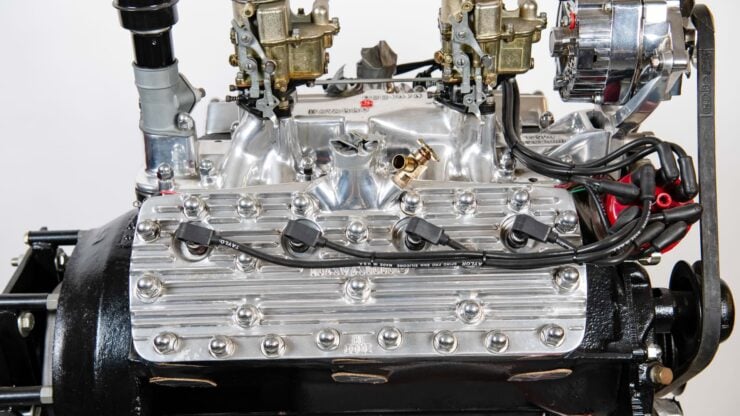

The weight of the Tudor coupe was such that it would never be particularly fast, even with all the performance upgrades Barney had applied. He pulled the engine and fitted it to a modified lightweight roadster – he got the car up to 107 mph at the last meet up at Muroc, California in the Mojave Desert before the bombing of Pearl Harbor.
The Pearl Harbor attack would bring the United States into WWII, and unsurprisingly Barney enlisted. He joined the U.S. Army Air Corps and trained as a navigator, but in his free time he never stopped designing performance upgrades for his Flathead V8.
After the war he worked for Lockheed for a time, before starting his own business to put his performance parts into production. His timing couldn’t have been better, the hot rod scene exploded in popularity after the war, and the Flathead V8 was the engine of choice for countless GIs returning from the European and Pacific theaters of war and looking to race.
Barney developed a broad range of parts including intake manifolds and supercharger kits, but he’s most famous for his high-performance alloy heads – named the Navarro heads. These heads improved gas flow in and out of the engine, they also helped with cooling, reduced issues with head warping and head gasket failures, and they improved the shape of the combustion chamber.
Supercharged engines fitted with Navarro upgrades would soon be regularly exceeding 200 mph on salt lakes in the United States. Decades later Barney would turn over his designs to Mike Herman of H&H Flatheads who placed them all back into production where they’re available to buy brand new today.
The Ford Navarro Flathead V8 Shown Here
The engine you see here is a Ford Flathead V8 fitted with a pair of Navarro heads, a Navarro aluminum twin-carburetor intake with Stromberg 97s, a Crower roller camshaft, a Mallory distributor, and an aluminum flywheel.
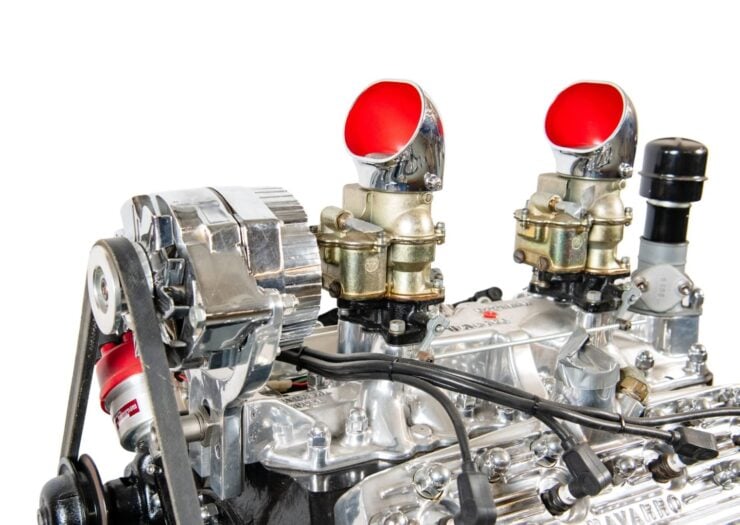

The stand that the engine is currently fitted to is included with the sale and it also comes with related literature. It’s fitted with an alternator and a starter motor, and so by all appearances it looks ready to drop into a hot rod and take to the street.
The engine is now due to roll across the auction block with Mecum on January the 17th in Florida. If you’d like to read more about it or register to bid you can visit the listing here.
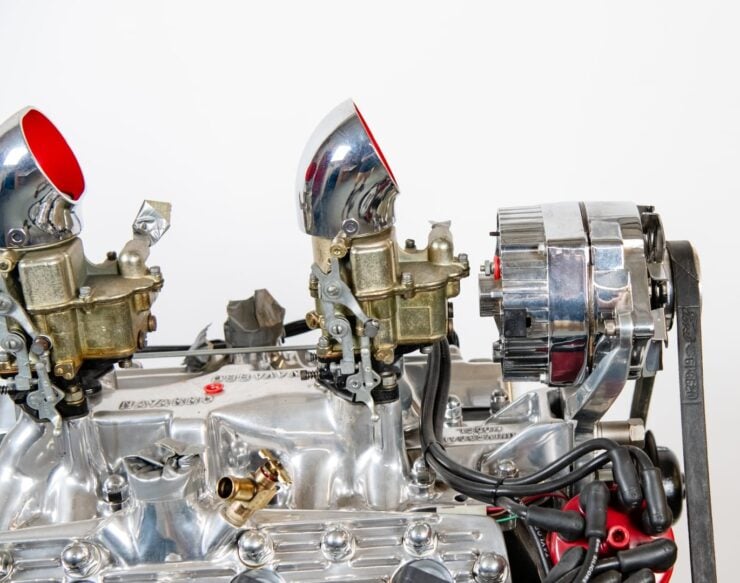
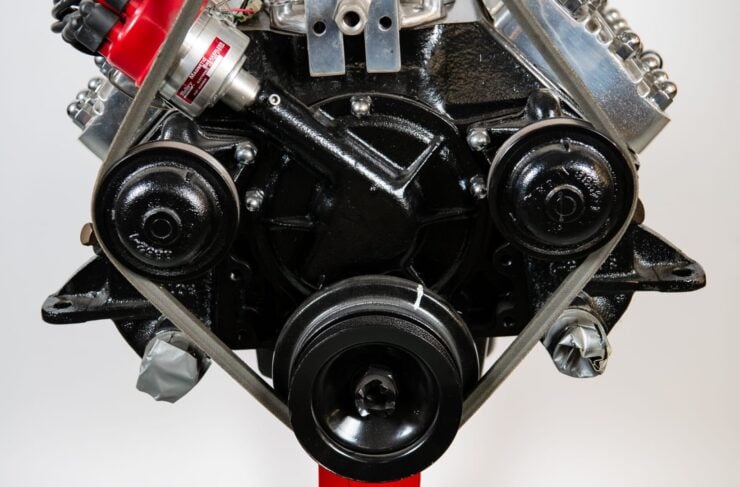
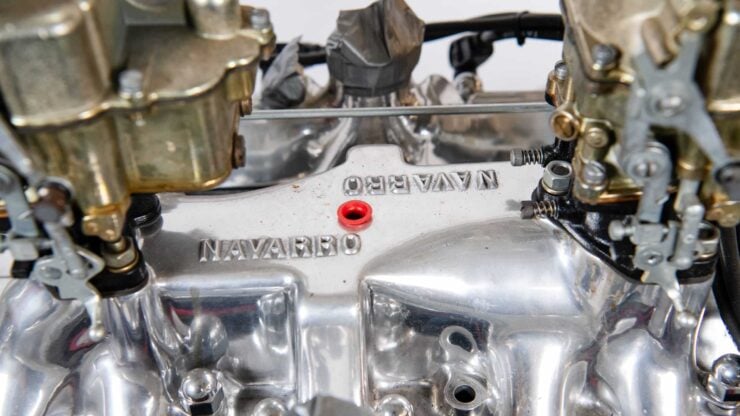
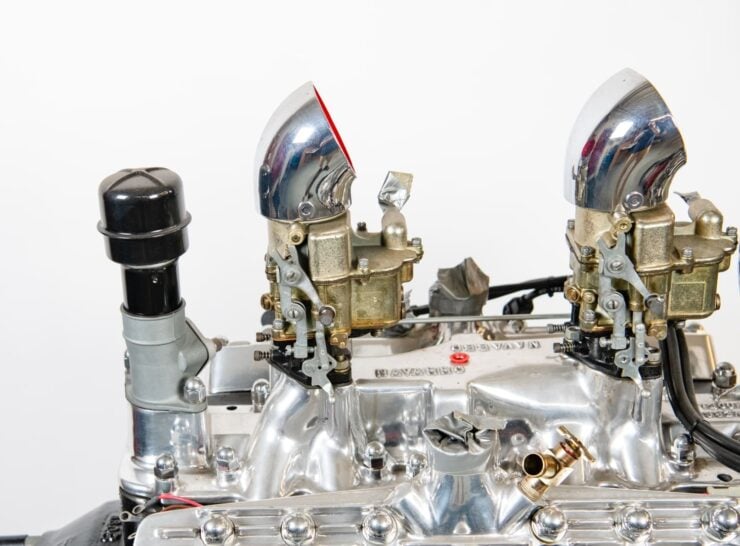
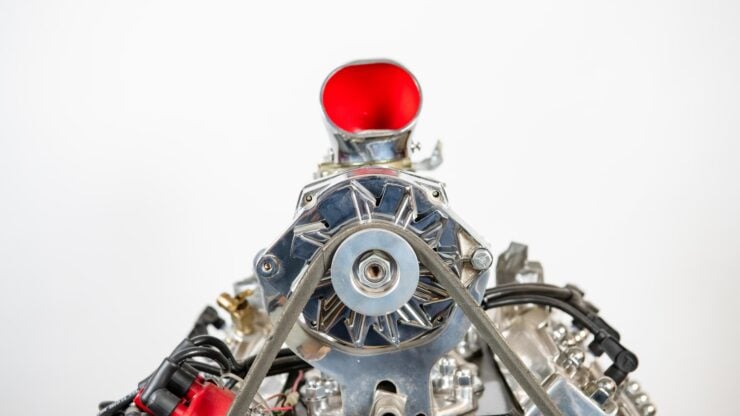
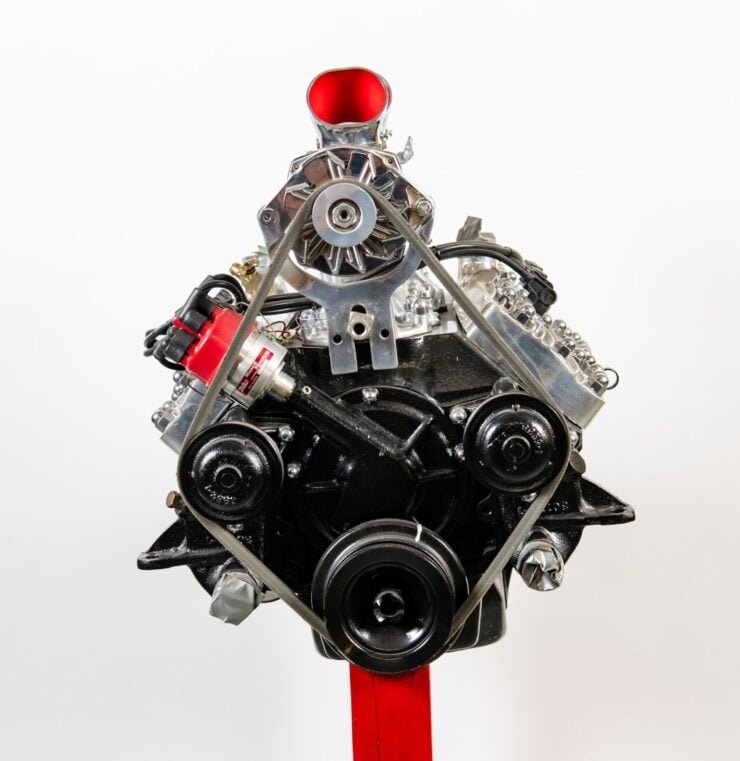
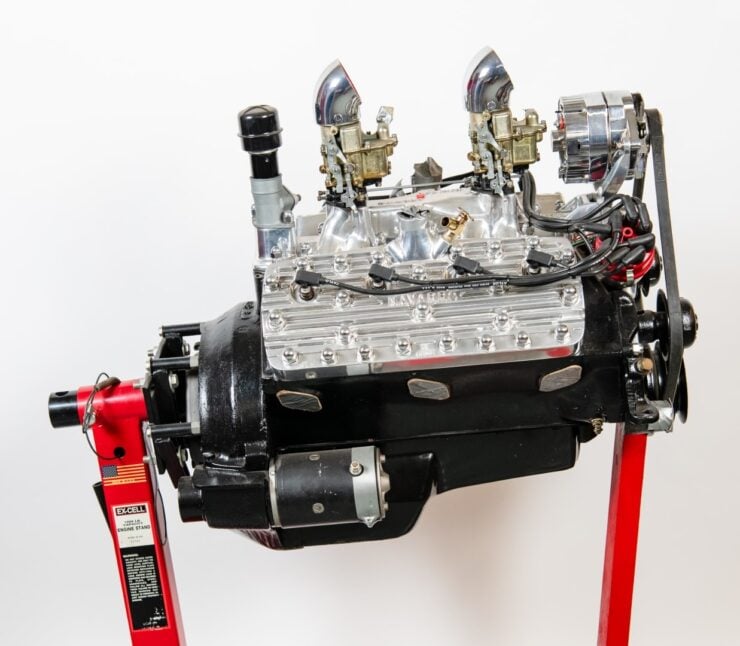
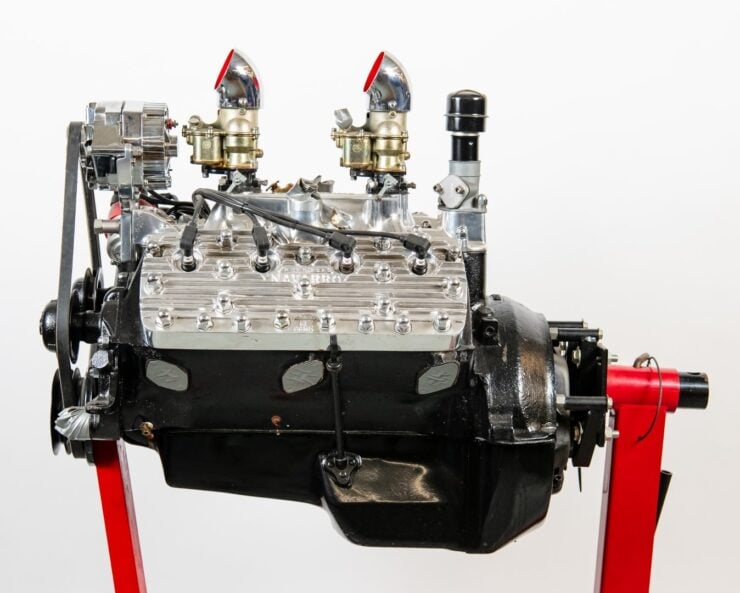
Images courtesy of Mecum

